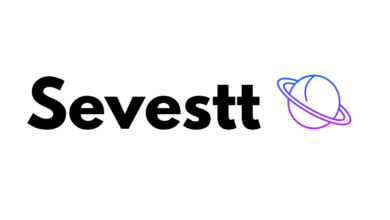procurement nation.com

ProcurementNation.com has become a pivotal source of insight and thought leadership for professionals navigating the ever-evolving landscape of procurement and supply chain management. In today’s volatile and complex environment, the role of procurement has moved far beyond cost control. It now encompasses risk management, supplier diversity, digital transformation, and sustainability. As organizations face disruptions ranging from geopolitical instability to climate change and supply shortages, the strategic value of procurement has never been more critical. This article explores the key trends and capabilities shaping the future of procurement, providing guidance for professionals striving to add measurable value across their organizations.
1. Redefining Procurement as a Strategic Function
Procurement is no longer viewed as a back-office, transactional role. In leading organizations, it is recognized as a strategic powerhouse that directly influences business performance, competitive advantage, and long-term resilience. Modern CPOs are sitting at the executive table, influencing product development, risk mitigation strategies, and even customer experience. Strategic procurement involves aligning sourcing decisions with corporate goals, such as sustainability targets, innovation, and market responsiveness. By integrating procurement into broader business strategy, companies unlock hidden value through better supplier collaboration, more intelligent sourcing decisions, and faster adaptability to market changes.
2. The Rise of Digital Procurement Platforms
Technology is transforming procurement from a paper-heavy, manual process into a streamlined, data-driven powerhouse. Digital procurement platforms now integrate artificial intelligence (AI), machine learning, blockchain, and real-time analytics to automate routine tasks and surface strategic insights. These platforms offer advanced capabilities like predictive demand forecasting, spend analysis, supplier risk scoring, and automated contract lifecycle management. Beyond efficiency, they empower procurement teams with actionable data, enabling them to make faster, smarter decisions. As digital ecosystems grow more interconnected, procurement’s ability to anticipate market shifts, reduce risk, and identify value opportunities is exponentially enhanced.
3. Supplier Collaboration and Risk Management
Today’s global supply chains are more complex—and fragile—than ever before. From pandemic-related shutdowns to geopolitical tensions and natural disasters, the importance of building strong, resilient supplier relationships has come to the forefront. Leading procurement teams are not just negotiating prices; they are co-developing products, sharing risk information, and jointly investing in innovation with suppliers. Supplier relationship management (SRM) has become a discipline in its own right, focusing on trust, transparency, and long-term value. Additionally, supplier risk management tools are helping organizations map dependencies, assess financial and geopolitical risks, and react proactively rather than reactively when disruptions occur.
4. Embracing Sustainable and Ethical Sourcing
Sustainability has evolved from a corporate social responsibility checkbox to a critical procurement priority. With increasing regulatory pressure, investor scrutiny, and consumer demand for ethical products, procurement professionals are under growing pressure to ensure that sourcing decisions support environmental and social goals. This means evaluating suppliers not just on cost and quality, but also on labor practices, carbon footprints, and compliance with ESG standards. Circular procurement, carbon tracking, and green supply chains are becoming mainstream, as companies look to reduce waste, promote fair trade, and build reputations as ethical businesses. A sustainable procurement strategy is now essential to mitigate long-term risks and create shared value.
5. Developing Talent and Procurement Capabilities
The evolving scope of procurement demands new skills—from data analytics and financial modeling to cross-cultural negotiation and strategic thinking. Traditional procurement training is no longer sufficient; organizations must invest in developing agile, tech-savvy professionals who can manage ambiguity and drive change. Upskilling and reskilling are essential to build teams capable of leveraging digital tools, interpreting complex data, and collaborating across functions and borders. Moreover, companies need to foster a culture where procurement is seen as a value-creator, not just a cost-cutter. This shift requires leadership support, continuous learning, and clear career paths that attract top talent to the function.
Conclusion:
Procurement is at a critical crossroads. Once viewed as a back-end function, it is now emerging as a driver of innovation, sustainability, and competitive advantage. As we navigate an era marked by disruption and uncertainty, procurement leaders must embrace technology, build strong supplier relationships, and focus on long-term strategic value. Platforms like ProcurementNation.com are instrumental in highlighting these shifts and equipping professionals with the tools, insights, and community they need to succeed. The future of procurement lies not in reacting to change—but in shaping it.



